Exploring the Efficacy of Mixed Reality versus Traditional Methods in Higher Education: A Comparative Study
Abstract
:1. Introduction
1.1. Immersive Technologies in Education
1.2. Network Visualization of the Literature on Augmented and Mixed Reality in Education
2. Materials and Methods
- Compare the effectiveness of two teaching methods, the conventional method (using PowerPoint slides) and the immersive technology method (using mixed reality and a HoloLens 2 device), in relation to learning outcomes and student cognitive load.
- Investigate the moderating role of age in the teaching methods—learning outcomes—student cognitive load relationship.
- Identify the implications and provide recommendations that will assist and guide the design and implementation of immersive technology interventions in education and training.
2.1. Participants
2.2. Materials
2.3. Procedure
- The participants were welcomed, informed about the purpose and procedure of the study, and then asked to sign a consent form, fill out a demographic questionnaire and undertake an IQ test (based on Raven’s progressive matrices method).
- The participants were given a pre-test that assessed their prior knowledge of the human muscular system. The pre-test consisted of an interview, with questions about the basic anatomy, physiology, and relative positioning of the muscles.
- The participants were randomly assigned to either the MR group or the PPT group and then directed to separate rooms. They were instructed to self-study the material for 10 min by using either the HoloLens device or the laptop and projector.
- The participants were given a post-test to measure their learning outcomes. The post-test had a time limit of 15 min, included 20 multiple choice questions drawn from similar topics to the pre-test, and was administered online by using Google Forms.
2.4. Data Analysis
3. Results
3.1. Descriptive Statistics
3.2. Inferential Statistics
4. Discussion
4.1. Summary of Findings
4.2. Interpretation of Findings
4.3. Implications for Practice
4.4. Recommendations for Future Research
5. Limitations
6. Conclusions
Author Contributions
Funding
Institutional Review Board Statement
Informed Consent Statement
Data Availability Statement
Acknowledgments
Conflicts of Interest
References
- Tang, Y.M.; Chau, K.Y.; Kwok, A.P.K.; Zhu, T.; Ma, X. A Systematic Review of Immersive Technology Applications for Medical Practice and Education—Trends, Application Areas, Recipients, Teaching Contents, Evaluation Methods, and Performance. Educ. Res. Rev. 2022, 35, 100429. [Google Scholar] [CrossRef]
- Di Serio, Á.; Ibáñez, M.B.; Kloos, C.D. Impact of an Augmented Reality System on Students’ Motivation for a Visual Art Course. Comput. Educ. 2013, 68, 586–596. [Google Scholar] [CrossRef]
- Zhao, M.; Ong, S.-K.; Nee, A.Y. An Augmented Reality-Assisted Therapeutic Healthcare Exercise System Based on Bare-Hand Interaction. Int. J. Hum.–Comput. Interact. 2016, 32, 708–721. [Google Scholar] [CrossRef]
- Bacon, L.; MacKinnon, L.; Cesta, A.; Cortellessa, G. Developing a Smart Environment for Crisis Management Training. J. Ambient Intell. Humaniz. Comput. 2013, 4, 581–590. [Google Scholar] [CrossRef]
- Sebillo, M.; Vitiello, G.; Paolino, L.; Ginige, A. Training Emergency Responders through Augmented Reality Mobile Interfaces. Multimed. Tools Appl. 2016, 75, 9609–9622. [Google Scholar] [CrossRef]
- Hamilton, D.; McKechnie, J.; Edgerton, E.; Wilson, C. Immersive Virtual Reality as a Pedagogical Tool in Education: A Systematic Literature Review of Quantitative Learning Outcomes and Experimental Design. J. Comput. Educ. 2021, 8, 1–32. [Google Scholar] [CrossRef]
- Kavanagh, S.; Luxton-Reilly, A.; Wuensche, B.; Plimmer, B. A Systematic Review of Virtual Reality in Education. Themes Sci. Technol. Educ. 2017, 10, 85–119. [Google Scholar]
- Khan, M.N.R.; Lippert, K.J. Immersive Technologies in Healthcare Education. In Intelligent Systems and Machine Learning for Industry; CRC Press: Boca Raton, FL, USA, 2022; pp. 115–138. [Google Scholar]
- Petruse, R.E.; Grecu, V.; Chiliban, B.M. Augmented Reality Applications in the Transition towards the Sustainable Organization; Springer: Berlin/Heidelberg, Germany, 2016; pp. 428–442. [Google Scholar]
- Van Krevelen, D.; Poelman, R. A Survey of Augmented Reality Technologies, Applications and Limitations. Int. J. Virtual Real. 2010, 9, 1–20. [Google Scholar] [CrossRef]
- Grecu, V.; Deneș, C.; Ipiña, N. Creative Teaching Methods for Educating Engineers. Appl. Mech. Mater. 2013, 371, 764–768. [Google Scholar]
- Mallam, S.C.; Nazir, S.; Renganayagalu, S.K. Rethinking Maritime Education, Training, and Operations in the Digital Era: Applications for Emerging Immersive Technologies. J. Mar. Sci. Eng. 2019, 7, 428. [Google Scholar] [CrossRef]
- Sutherland, I.E. Sketch Pad a Man-Machine Graphical Communication System. In Proceedings of the SHARE Design Automation Workshop; Association for Computing Machinery: New York, NY, USA, 1964; pp. 6–329. [Google Scholar]
- Slater, M. Place Illusion and Plausibility Can Lead to Realistic Behaviour in Immersive Virtual Environments. Philos. Trans. R. Soc. B Biol. Sci. 2009, 364, 3549–3557. [Google Scholar] [CrossRef]
- Lee, H.-G.; Chung, S.; Lee, W.-H. Presence in Virtual Golf Simulators: The Effects of Presence on Perceived Enjoyment, Perceived Value, and Behavioral Intention. New Media Soc. 2013, 15, 930–946. [Google Scholar] [CrossRef]
- Díaz-López, L.; Tarango, J.; Contreras, C.-P. Strategies for Inclusive and Safe Education Using Virtual Reality: From the Digital Library Perspective. Digit. Libr. Perspect. 2019, 35, 216–226. [Google Scholar] [CrossRef]
- Butt, A.L.; Kardong-Edgren, S.; Ellertson, A. Using Game-Based Virtual Reality with Haptics for Skill Acquisition. Clin. Simul. Nurs. 2018, 16, 25–32. [Google Scholar] [CrossRef]
- Salzman, M.C.; Dede, C.; Loftin, R.B.; Chen, J. A Model for Understanding How Virtual Reality Aids Complex Conceptual Learning. Presence Teleoperators Virtual Environ. 1999, 8, 293–316. [Google Scholar] [CrossRef]
- Ellaway, R.; Masters, K. AMEE Guide 32: E-Learning in Medical Education Part 1: Learning, Teaching and Assessment. Med. Teach. 2008, 30, 455–473. [Google Scholar] [CrossRef] [PubMed]
- Harden, R.M.; Laidlaw, J.M. Effective Continuing Education: The CRISIS Criteria. Med. Educ. 1992, 26, 407–422. [Google Scholar] [CrossRef]
- Ryan, G.V.; Callaghan, S.; Rafferty, A.; Higgins, M.F.; Mangina, E.; McAuliffe, F. Learning Outcomes of Immersive Technologies in Health Care Student Education: Systematic Review of the Literature. J. Med. Internet Res. 2022, 24, e30082. [Google Scholar] [CrossRef] [PubMed]
- Fortman, J.; Quintana, R. Fostering Collaborative and Embodied Learning with Extended Reality: Special Issue Introduction. Int. J. Comput.-Support. Collab. Learn. 2023, 18, 145–152. [Google Scholar] [CrossRef]
- Mathew, P.S.; Pillai, A.S. Role of Immersive (XR) Technologies in Improving Healthcare Competencies: A Review. In Virtual and Augmented Reality in Education, Art, and Museums; IGI Global: Hershey, PA, USA, 2020; pp. 23–46. [Google Scholar]
- Makransky, G.; Terkildsen, T.S.; Mayer, R.E. Adding Immersive Virtual Reality to a Science Lab Simulation Causes More Presence but Less Learning. Learn. Instr. 2019, 60, 225–236. [Google Scholar] [CrossRef]
- Parong, J.; Mayer, R.E. Learning Science in Immersive Virtual Reality. J. Educ. Psychol. 2018, 110, 785. [Google Scholar] [CrossRef]
- Jensen, L.; Konradsen, F. A Review of the Use of Virtual Reality Head-Mounted Displays in Education and Training. Educ. Inf. Technol. 2018, 23, 1515–1529. [Google Scholar] [CrossRef]
- Reed, D.A.; Cook, D.A.; Beckman, T.J.; Levine, R.B.; Kern, D.E.; Wright, S.M. Association between Funding and Quality of Published Medical Education Research. JAMA 2007, 298, 1002–1009. [Google Scholar] [CrossRef] [PubMed]
- Odame, A.; Tümler, J. Is Off-the-Shelf VR Software Ready for Medical Teaching? In Proceedings of the Virtual, Augmented and Mixed Reality: Design and Development, Virtual, 16 June 2022; Chen, J.Y.C., Fragomeni, G., Eds.; Springer International Publishing: Cham, Switzerland, 2022; pp. 224–237. [Google Scholar]
- Banjar, A.; Xu, X.; Iqbal, M.Z.; Campbell, A. A Systematic Review of the Experimental Studies on the Effectiveness of Mixed Reality in Higher Education between 2017 and 2021. Comput. Educ. X Real. 2023, 3, 100034. [Google Scholar] [CrossRef]
- Sweller, J. Cognitive Load Theory. In Psychology of Learning and Motivation; Elsevier: Amsterdam, The Netherlands, 2011; Volume 55, pp. 37–76. ISBN 0079-7421. [Google Scholar]
- Sweller, J. Cognitive Load Theory and Educational Technology. Educ. Technol. Res. Dev. 2020, 68, 1–16. [Google Scholar] [CrossRef]
- Felder, R.M.; Silverman, L.K. Learning and Teaching Styles in Engineering Education. Eng. Educ. 1988, 78, 674–681. [Google Scholar]
- Felder, R.M. Opinion: Uses, Misuses, and Validity of Learning Styles. Adv. Eng. Educ. 2020, 8, 1–16. [Google Scholar]
- Dowling, C.; Godfrey, J.M.; Gyles, N. Do Hybrid Flexible Delivery Teaching Methods Improve Accounting Students’ Learning Outcomes? Account. Educ. 2003, 12, 373–391. [Google Scholar] [CrossRef]
- Nikitenko, G. Analysis of Adult Students’ Self-Directed Learning Readiness, Affective Learning Outcomes, Prior e-Learning Experience, and Age in Hybrid and Online Courses; Association for the Advancement of Computing in Education (AACE): Chesapeake, VA, USA, 2011; pp. 2503–2513. [Google Scholar]
- VOSviewer—Visualizing Scientific Landscapes. Available online: https://www.vosviewer.com// (accessed on 13 January 2024).
- Zhang, J.; Yen, S.-H.; Liu, T.-C.; Sung, Y.-T.; Chang, K.-E. Studies on Learning Effects of AR-Assisted and PPT-Based Lectures. Asia-Pac. Educ. Res. 2022, 31, 1–10. [Google Scholar] [CrossRef]
- Staddon, R.V. Bringing Technology to the Mature Classroom: Age Differences in Use and Attitudes. Int. J. Educ. Technol. High. Educ. 2020, 17, 11. [Google Scholar] [CrossRef]
- Lewis, I. The Student Experience of Higher Education; Routledge: London, UK, 2018; Volume 16, ISBN 0-429-82624-9. [Google Scholar]
- Garland, K.J.; Noyes, J.M. Computer Experience: A Poor Predictor of Computer Attitudes. Comput. Hum. Behav. 2004, 20, 823–840. [Google Scholar] [CrossRef]
- Kim, S.; Song, S.-M.; Yoon, Y.-I. Smart Learning Services Based on Smart Cloud Computing. Sensors 2011, 11, 7835–7850. [Google Scholar] [CrossRef] [PubMed]
- Butler, A.C. Multiple-Choice Testing in Education: Are the Best Practices for Assessment also Good for Learning? J. Appl. Res. Mem. Cogn. 2018, 7, 323–331. [Google Scholar] [CrossRef]
- Roediger, H.L.; Marsh, E.J. The Positive and Negative Consequences of Multiple-Choice Testing. J. Exp. Psychol. Learn. Mem. Cogn. 2005, 31, 1155–1159. [Google Scholar] [CrossRef]
- Marsh, E.J.; Roediger, H.L.; Bjork, R.A.; Bjork, E.L. The Memorial Consequences of Multiple-Choice Testing. Psychon. Bull. Rev. 2007, 14, 194–199. [Google Scholar] [CrossRef]
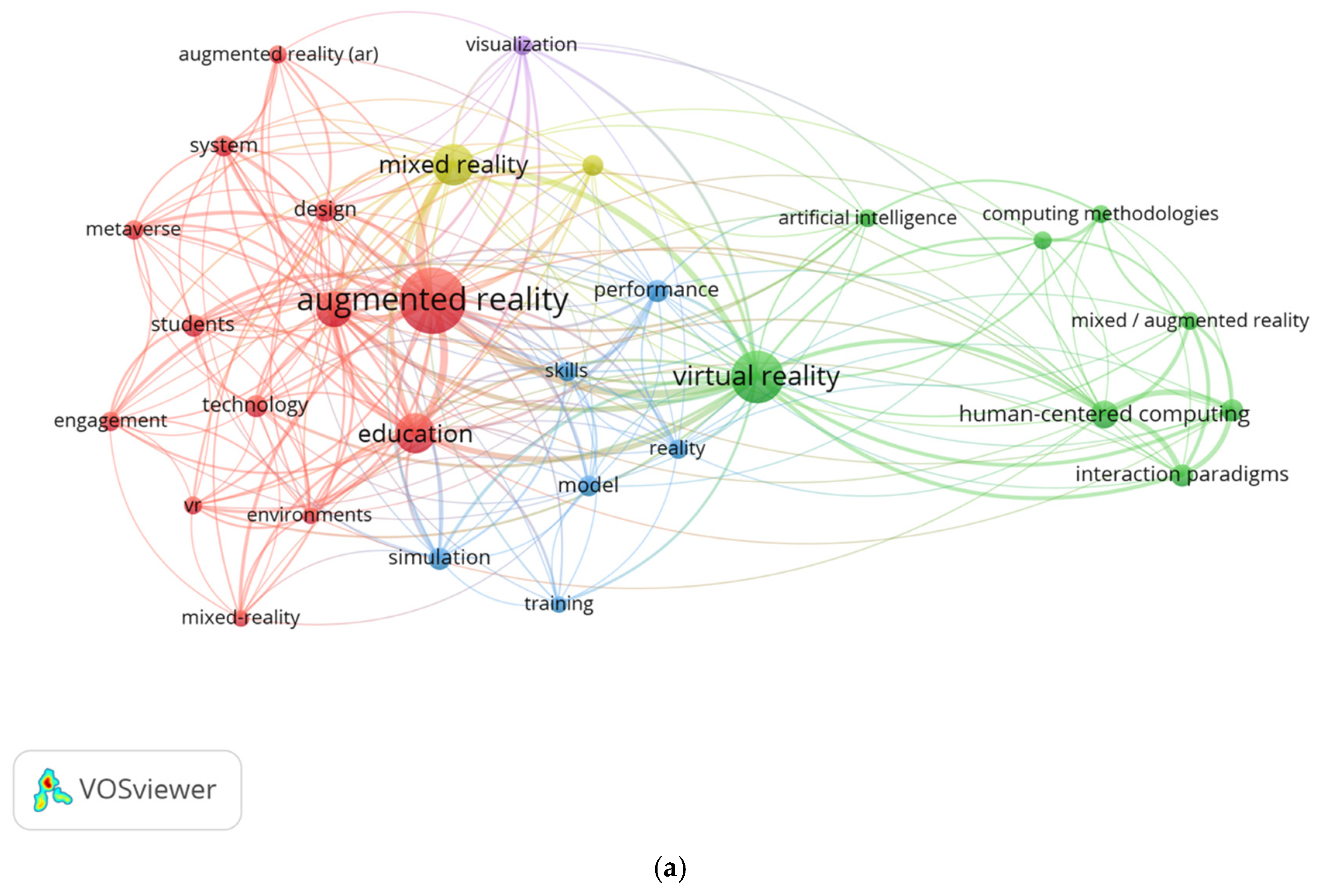
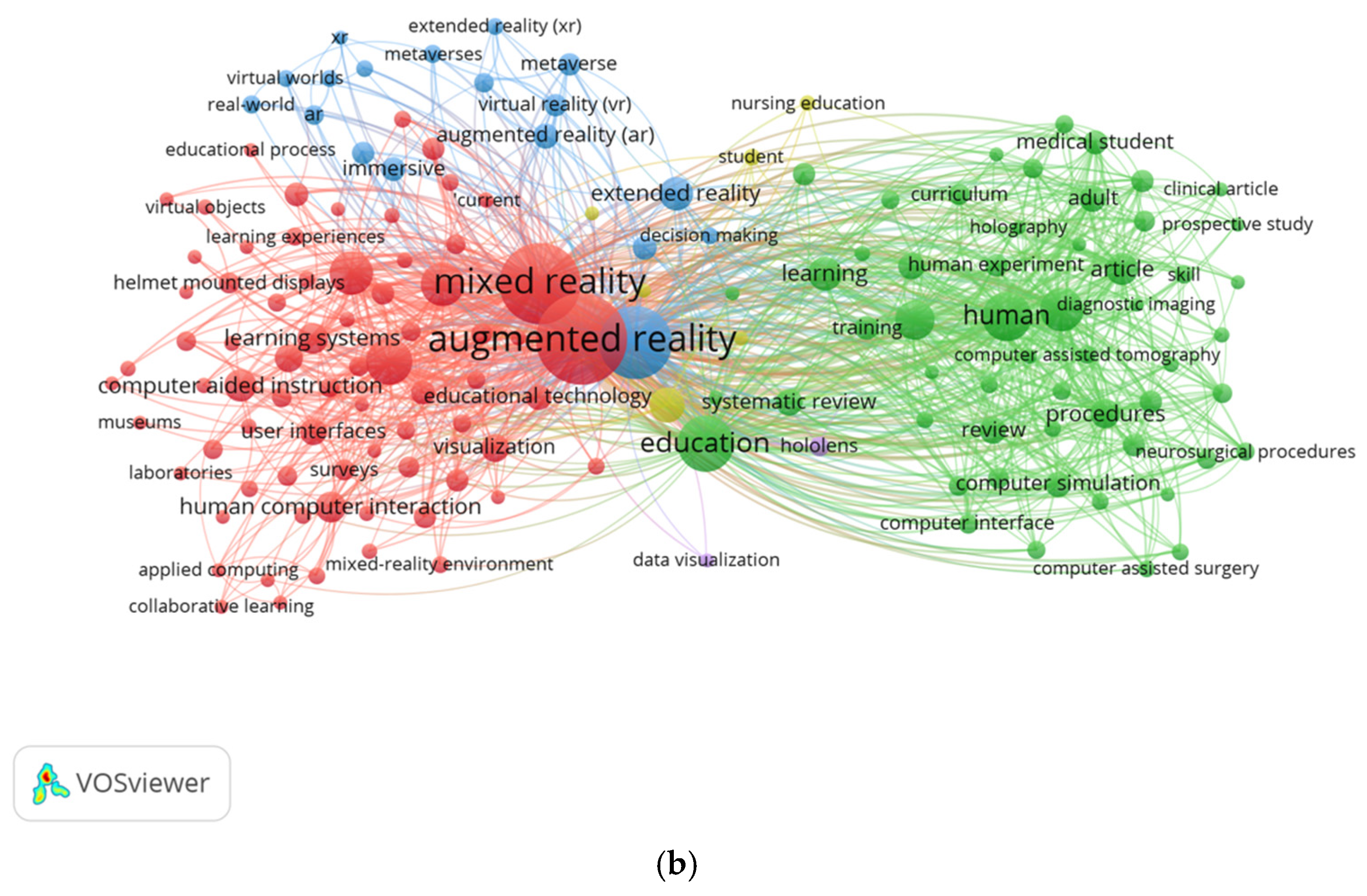
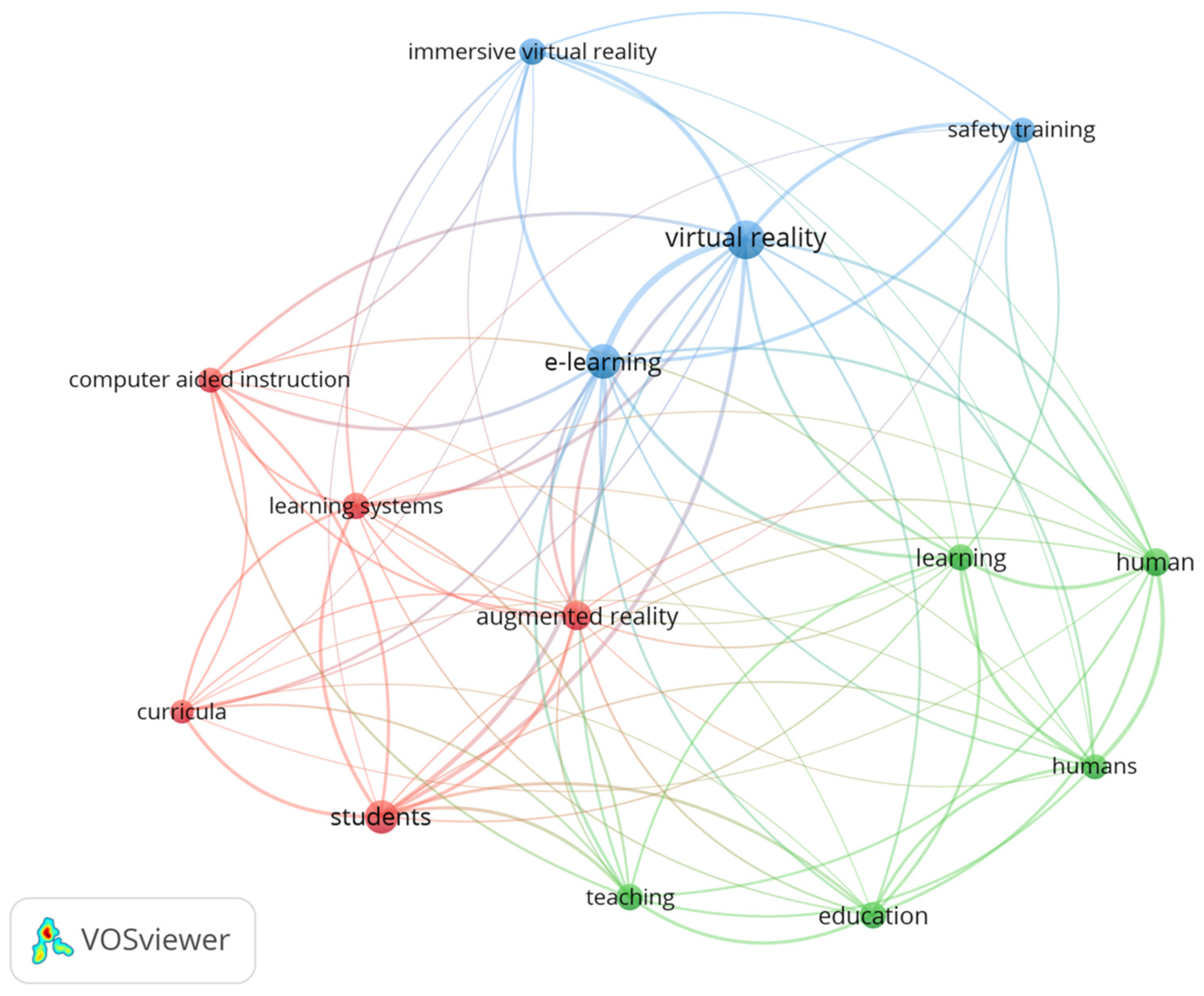
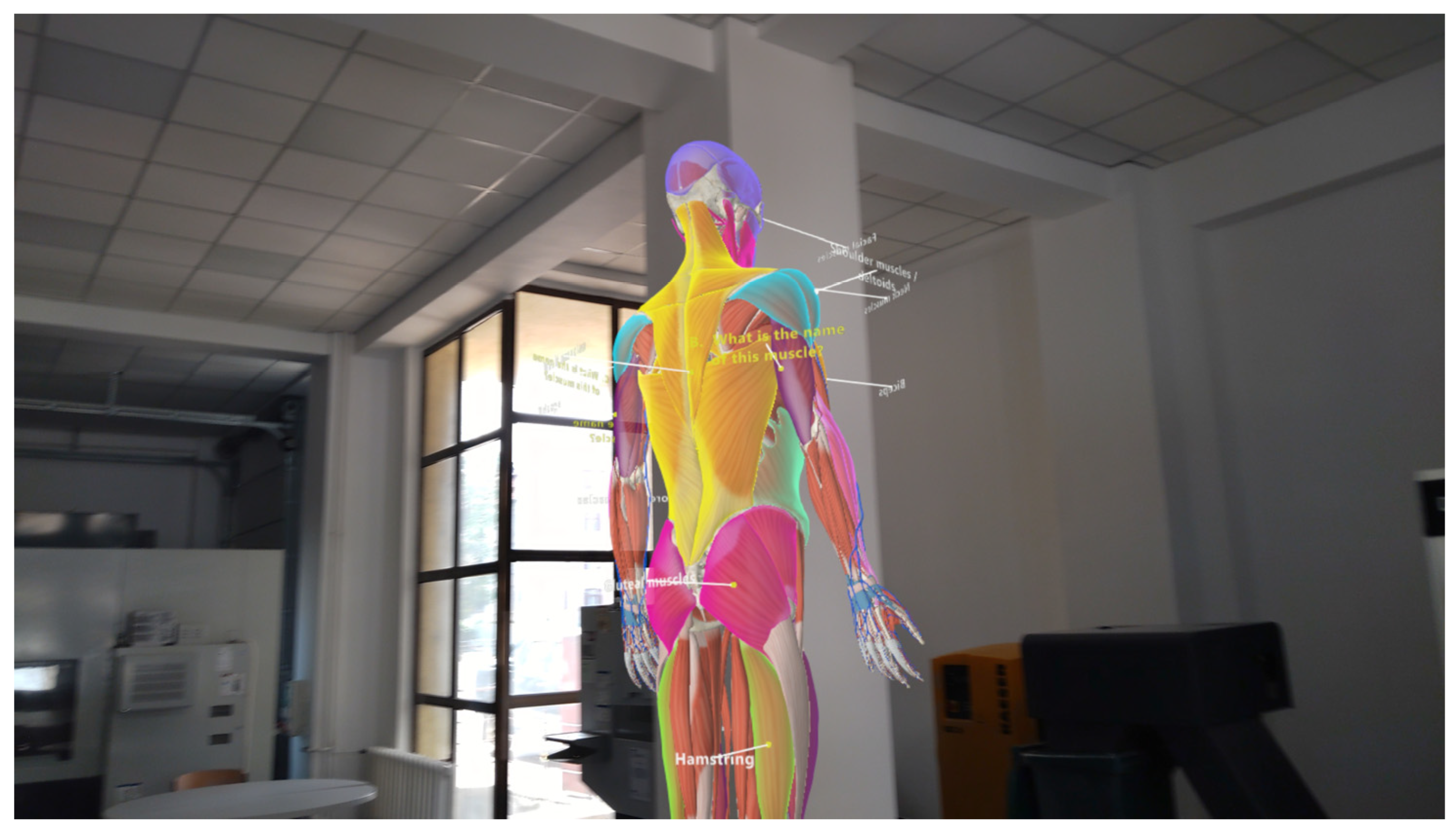
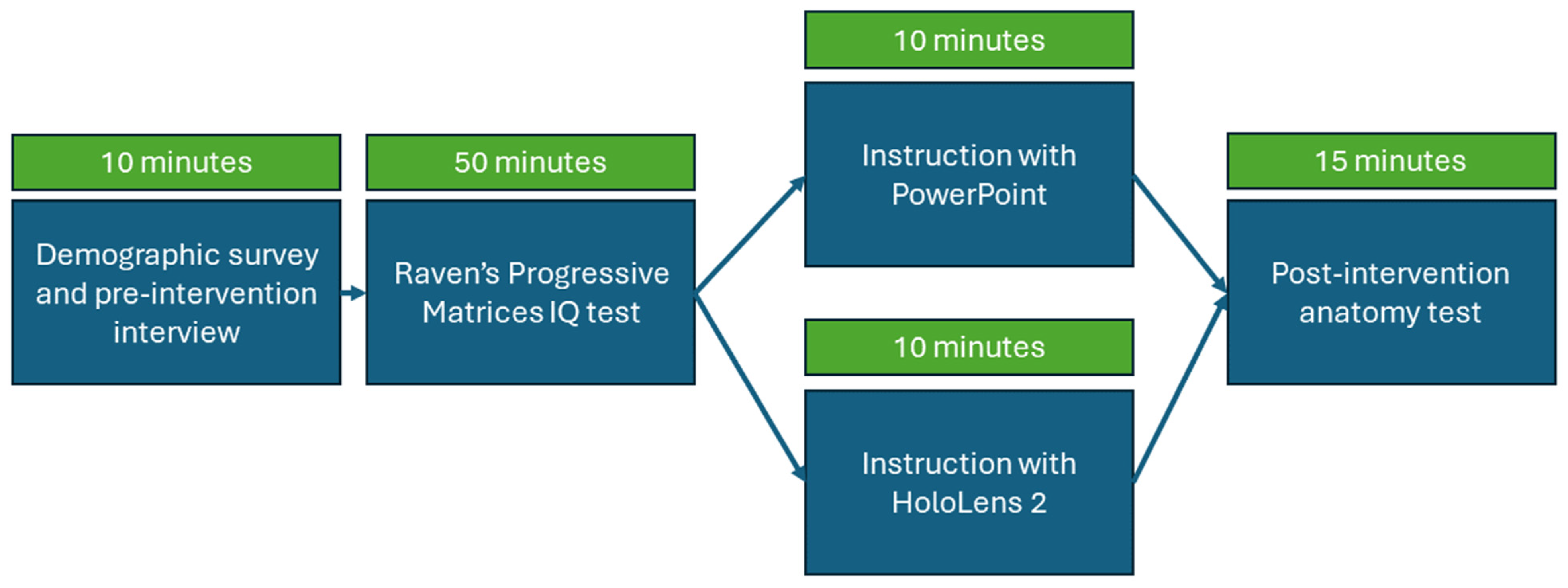

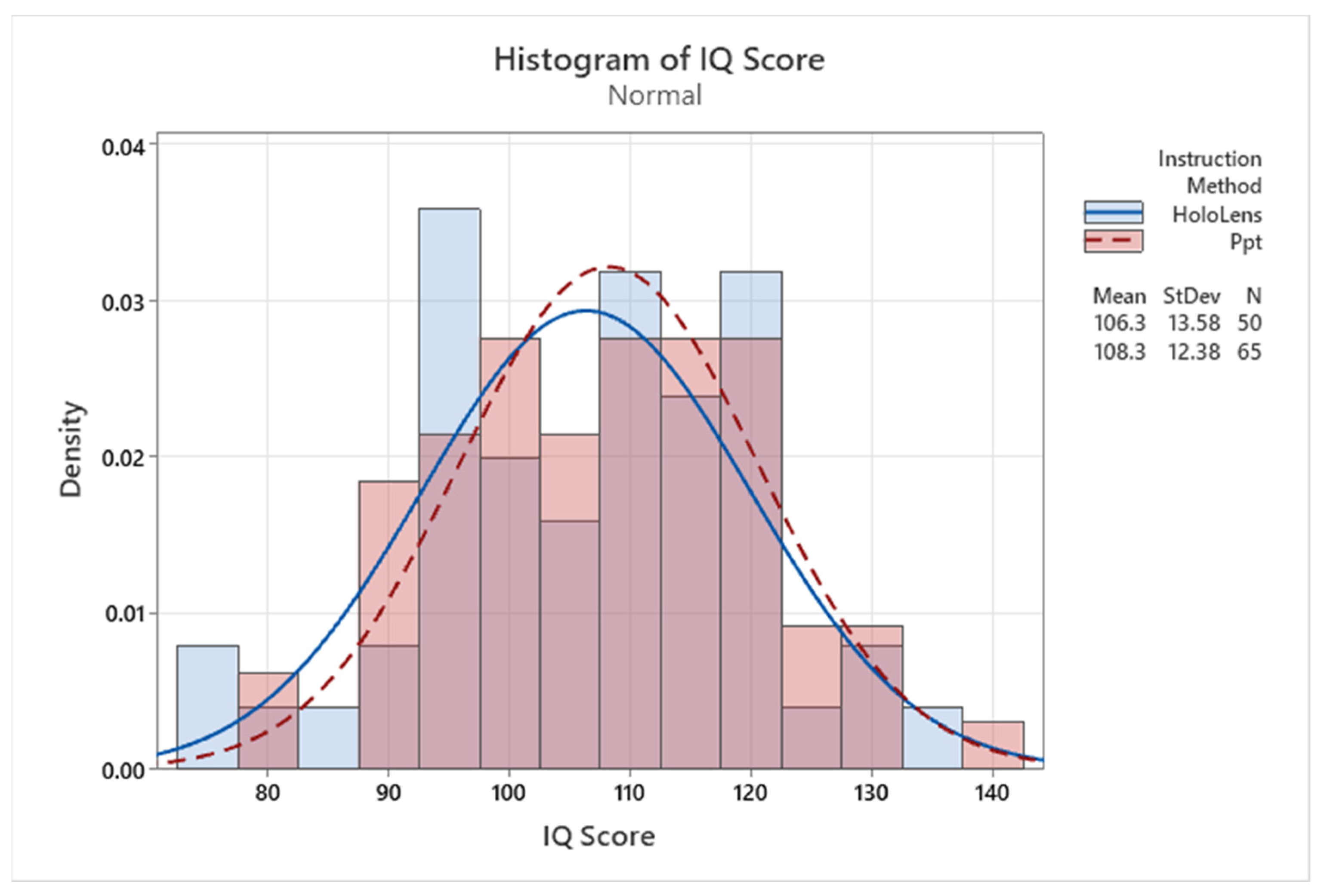



| Instruction Method | Variable | Sex | N | Mean | SE Mean | StDev | Minimum | Q1 | Median | Q3 | Maximum |
|---|---|---|---|---|---|---|---|---|---|---|---|
| Hololens | Correct answers | Female | 16 | 6.813 | 0.672 | 2.689 | 3.000 | 4.250 | 6.000 | 9.000 | 12.000 |
| Male | 34 | 9.147 | 0.647 | 3.775 | 2.000 | 6.750 | 9.500 | 12.000 | 16.000 | ||
| Variable | Sex | N | Mean | SE Mean | StDev | Minimum | Q1 | Median | Q3 | Maximum | |
| PowerPoint | Correct answers | Female | 27 | 8.370 | 0.851 | 4.422 | 2.000 | 5.000 | 9.000 | 12.000 | 17.000 |
| Male | 38 | 9.658 | 0.683 | 4.212 | 2.000 | 7.000 | 10.000 | 12.000 | 20.000 |
Disclaimer/Publisher’s Note: The statements, opinions and data contained in all publications are solely those of the individual author(s) and contributor(s) and not of MDPI and/or the editor(s). MDPI and/or the editor(s) disclaim responsibility for any injury to people or property resulting from any ideas, methods, instructions or products referred to in the content. |
© 2024 by the authors. Licensee MDPI, Basel, Switzerland. This article is an open access article distributed under the terms and conditions of the Creative Commons Attribution (CC BY) license (https://creativecommons.org/licenses/by/4.0/).
Share and Cite
Petruse, R.E.; Grecu, V.; Gakić, M.; Gutierrez, J.M.; Mara, D. Exploring the Efficacy of Mixed Reality versus Traditional Methods in Higher Education: A Comparative Study. Appl. Sci. 2024, 14, 1050. https://doi.org/10.3390/app14031050
Petruse RE, Grecu V, Gakić M, Gutierrez JM, Mara D. Exploring the Efficacy of Mixed Reality versus Traditional Methods in Higher Education: A Comparative Study. Applied Sciences. 2024; 14(3):1050. https://doi.org/10.3390/app14031050
Chicago/Turabian StylePetruse, Radu Emanuil, Valentin Grecu, Maja Gakić, Jorge Martin Gutierrez, and Daniel Mara. 2024. "Exploring the Efficacy of Mixed Reality versus Traditional Methods in Higher Education: A Comparative Study" Applied Sciences 14, no. 3: 1050. https://doi.org/10.3390/app14031050
APA StylePetruse, R. E., Grecu, V., Gakić, M., Gutierrez, J. M., & Mara, D. (2024). Exploring the Efficacy of Mixed Reality versus Traditional Methods in Higher Education: A Comparative Study. Applied Sciences, 14(3), 1050. https://doi.org/10.3390/app14031050









